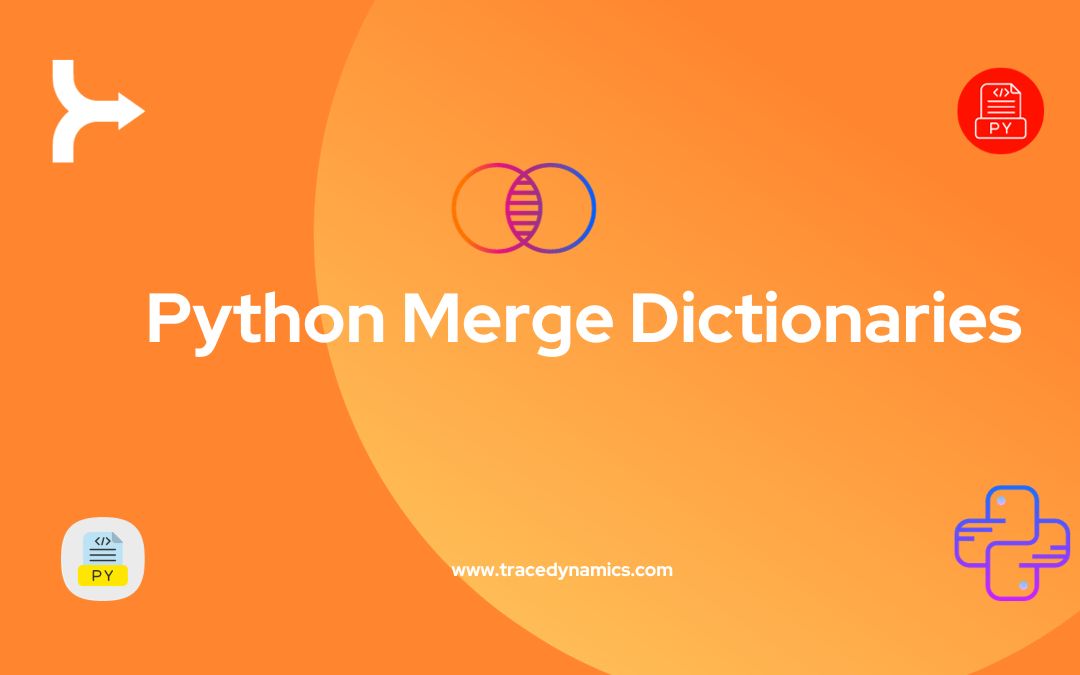Python Merge Dictionaries: merging dictionaries in Python is a fundamental yet powerful technique that can streamline data manipulation and enhance code efficiency. Understanding the nuances of various merging methods can significantly impact the performance and readability of your Python scripts.
Key Takeaways:- Explore different methods to merge dictionaries in Python.
- Understand handling duplicate keys and performance implications.
- Real-world applications and examples.
- FAQs for quick problem-solving.
Introduction to Python Dictionaries
Python dictionaries are versatile data structures used for storing key-value pairs. They offer fast access and efficient storage, making them ideal for various applications, from data analysis to web development.
What are Python Dictionaries?
Python dictionaries are mutable, unordered collections of items. Each item in a dictionary has a key and a corresponding value, expressed as a key-value pair. This structure allows for quick data retrieval by key, making dictionaries highly efficient for certain operations.
Overview of Merging Dictionaries
Merging dictionaries involves combining two or more dictionaries into one. In Python, this can be done in several ways, each with its own use case and performance characteristics.
Why Merge Dictionaries?
Merging dictionaries is common in scenarios where you need to consolidate data from multiple sources, update existing data, or configure defaults with user-specific options. Understanding the right method for each situation is crucial for optimal code performance.
Part 1: Methods for Merging Dictionaries
Using the Update Method
The update() method is a straightforward way to merge two dictionaries. It adds key-value pairs from one dictionary to another, updating the value if the key already exists.
Syntax and Example:
dict1 = {'a': 1, 'b': 2}
dict2 = {'b': 3, 'c': 4}
dict1.update(dict2)
# Result: {'a': 1, 'b': 3, 'c': 4}
Using Dictionary Unpacking
Python 3.5 introduced a more elegant way to merge dictionaries: dictionary unpacking. This method uses the ** operator to merge dictionaries in a single expression.
merged_dict = {**dict1, **dict2}
# Result: {'a': 1, 'b': 3, 'c': 4}
Merging with Comprehensions
Dictionary comprehensions offer a more flexible way of merging dictionaries, allowing for additional logic during the merge.
Example with Condition:
merged_dict = {k: dict2[k] if k in dict2 else dict1[k] for k in {*dict1, *dict2}}
This method iterates over the keys of both dictionaries and applies a condition to decide which value to take.
Part 2: Advanced Techniques and Considerations
Handling Duplicate Keys
When merging dictionaries, duplicate keys can lead to data being overwritten. It’s essential to handle these cases based on the specific requirements of your application.
Strategies for Duplicate Keys:
- Overwrite: The most straightforward approach, where the value from the second dictionary replaces the value from the first.
- Skip: Ignore the value from the second dictionary if the key already exists.
- Merge: If values are also dictionaries or lists, merge them instead of replacing.
Merging Large Dictionaries
Merging large dictionaries can have performance implications. It’s crucial to choose a method that balances efficiency and readability.
Performance Tips:
- Prefer built-in methods like
update()for their C-level optimizations. - Use dictionary unpacking for smaller dictionaries or when readability is a priority.
- Consider generator expressions or comprehensions for memory efficiency.
Performance Aspects
Understanding the performance characteristics of different merging methods is key, especially in data-intensive applications.
Benchmarks:
| Method | Time Complexity | Use Case |
|---|---|---|
update() |
O(n) | General merging |
| Dictionary Unpacking | O(n) | One-liners, readability |
| Comprehensions | O(n) | Complex merging conditions |
Real-world Use Cases
Merging dictionaries is common in many real-world scenarios:
- Data Aggregation: Combining data from multiple sources, such as APIs or databases.
- Configuration Management: Overriding default settings with user preferences.
- Data Transformation: Manipulating and combining data for analysis or visualization.
Part 3: Practical Examples and Case Studies
Example Projects and Code Snippets
Consider a web application where user preferences need to be merged with default settings:
defaults = {'theme': 'light', 'notifications': True}
user_prefs = {'theme': 'dark'}
final_settings = {**defaults, **user_prefs}
This snippet shows how dictionary unpacking can be used to effectively merge user preferences with default settings, providing a personalized experience.
| Method | Best Use Case |
|---|---|
update() |
Simple merging with overwriting |
| Dictionary Unpacking | Readable, one-liner merging |
| Comprehensions | Merging with conditional logic |
Advanced Merging Techniques
In certain scenarios, you might need to merge dictionaries based on complex conditions or logic. Here are some advanced techniques:
Merging with Custom Logic
Consider a scenario where you need to merge dictionaries based on the type of values:
def merge_with_logic(dict1, dict2):
merged = {}
for key in dict1:
if key in dict2:
if isinstance(dict1[key], list) and isinstance(dict2[key], list):
merged[key] = dict1[key] + dict2[key]
else:
merged[key] = dict2[key]
else:
merged[key] = dict1[key]
return merged
This function merges two dictionaries, concatenating lists and otherwise using the value from dict2.
Code Snippets and Examples
Scenario: Merging Configurations
Imagine a scenario where you’re merging configurations for a software application:
default_config = {'logging': True, 'debug_mode': False}
user_config = {'debug_mode': True}
final_config = {**default_config, **user_config}
This code effectively merges user-configured options with default settings.
Frequently Asked Questions (FAQs)
Can I merge more than two dictionaries at once in Python?
Yes, you can merge multiple dictionaries using dictionary unpacking or a loop with the update method.
How do I handle type conflicts when merging dictionaries?
Type conflicts should be handled programmatically, considering the specific requirements of your application, such as type casting or using conditional logic.
Is there a way to merge dictionaries without overwriting existing keys?
Yes, you can use dictionary comprehensions to conditionally update keys, thus preventing overwrites.
Are there any libraries in Python that help with dictionary merging?
While Python’s standard library provides robust support for dictionary merging, external libraries like Pandas can offer additional functionality for complex data structures.
What's the most efficient way to merge large dictionaries in Python?
For large dictionaries, using built-in methods like update(), which are optimized at the C level, is generally more efficient.

